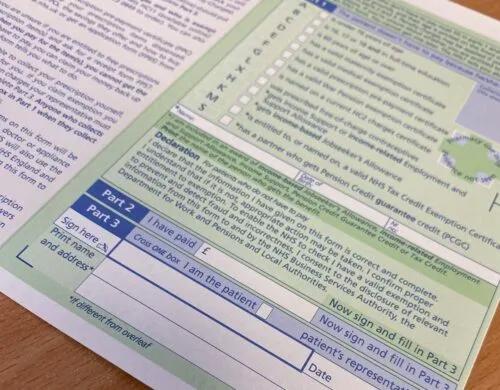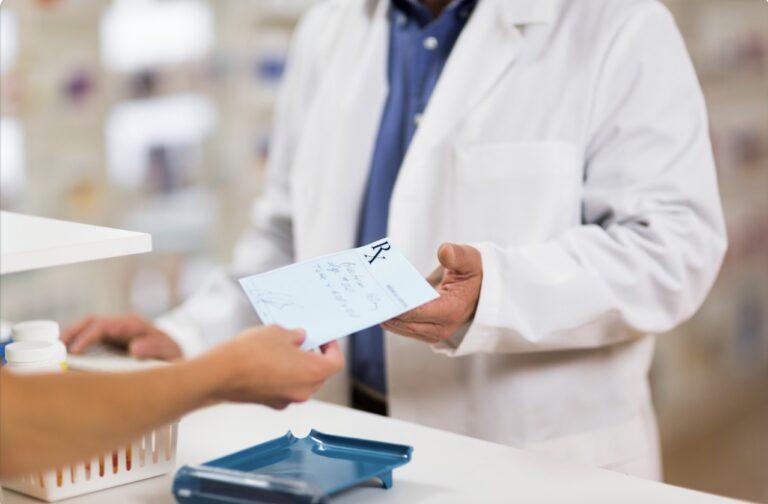In today’s digital age, the NHS has embraced technology to streamline its processes and enhance patient care. One such advancement is the implementation of electronic prescriptions, which have revolutionised the way medications and essential supplies are prescribed, sent, and processed. In this article, we will explore the ins and outs of the NHS electronic repeat dispensing system, its benefits, and how it works for prescribers, dispensers, and patients.
What is NHS electronic prescription?
The Electronic Prescription Services (EPS) was introduced by the Health and Social Care Information Centre (HSCIC). The EPS service allows prescriptions to be sent electronically via the NHS spine from the surgery. It is a secure and efficient system that allows prescribers, such as doctors and healthcare professionals, to send prescriptions electronically to a designated dispenser, such as a pharmacy or a dispensing appliance contractor (DAC). This eliminates the need for traditional paper prescriptions, making the prescribing and dispensing process more convenient and environmentally friendly.
EPS is widely used in primary care mainly general practice, with over 95% of prescriptions being generated electronically. It also extends its capabilities to secondary care and community care settings, including acute hospital trusts, community hospital trusts, and mental health trusts.
Benefits of NHS electronic prescription
The adoption of NHS electronic prescriptions brings numerous benefits for prescribers, dispensers, and patients alike.
Efficiency for prescribers
Electronic prescriptions enable prescribers to process prescriptions more efficiently after consultations. Instead of handwritten or printed prescriptions, they can electronically generate and send prescriptions directly to the chosen dispenser. This reduces the likelihood of errors that may occur during the manual transcription of paper prescriptions.
Convenience for dispensers
Dispensers, such as pharmacies and DACs, also benefit from the electronic prescription system. They receive prescriptions directly from prescribers, eliminating the need for patients to physically collect paper prescriptions from their GP surgery. This streamlines the dispensing process and improves stock control.
Time-saving for patients
For patients, electronic prescriptions offer significant time and cost savings. They no longer need to make unnecessary trips to their GP practices to pick up paper prescriptions. Instead, they can choose a pharmacy or dispenser of their preference, and their prescriptions will be sent electronically to that location. This convenience is particularly beneficial for patients who require regular prescriptions or use a prescription collection service.
Environmental benefits
By reducing the reliance on paper prescriptions, the NHS electronic prescription system contributes to a more sustainable and environmentally friendly healthcare system. The elimination of paper prescriptions helps save trees and reduces waste.
How does NHS electronic prescription work?
The NHS electronic prescription process involves prescribers, dispensers, and patients, each playing a crucial role in ensuring the smooth flow of medication and essential supplies. Let’s delve into the step-by-step process of how electronic prescriptions work.
Prescribers: Choosing a pharmacy or dispenser
Prescribers have two options when it comes to electronic prescriptions. They can either choose a specific community pharmacy or dispenser to dispense all their prescriptions or allow patients to choose a dispenser each time they receive a prescription.
If a prescriber selects a specific pharmacy or nominated dispenser, all prescriptions issued by the prescriber will be electronically sent to the chosen location. This option is particularly beneficial for prescribers who have patients with regular repeat prescriptions or those already using a prescription collection service.
On the other hand, prescribers can send NHS prescriptions to a pharmacy of the patient’s choice each time, patients will receive a paper copy of their prescription with a unique barcode. This barcode will be scanned at the chosen pharmacy or dispenser to access the prescription from the secure NHS database. However, it’s important to note that the majority of prescriptions are now processed electronically, with paper prescriptions only available in special circumstances. You can nominate any pharmacy within England who have signed up for EPS.
Dispensers: Processing electronic prescriptions
Dispensers, including pharmacies and DACs, play a crucial role in receiving and processing electronic prescriptions. Once an EPS prescription is sent electronically, the chosen dispenser will receive it securely through the NHS electronic prescription system.
For pharmacies, this means they can stock the prescribed medication and essential supplies in advance. Patients can then collect their prescriptions directly from the pharmacy without the need for a physical paper prescription. This saves time and reduces unnecessary visits to GP practices.
DACs, on the other hand, are responsible for the dispensing of specific items, such as appliances, incontinence appliances, and stoma appliances. DACs cannot dispense medicines, ACBS foods, toilet preparations, or chemical reagents. Therefore, prescribers must ensure that only appropriate items are sent to DAC nominations.
Patients: Collecting medication and essential supplies
Patients benefit from the convenience of electronic prescriptions. Depending on the option chosen by the prescriber, they can either collect their prescriptions directly from their chosen pharmacy or dispenser without presenting a paper prescription or choose a dispenser each time they receive a prescription.
When patients opt for a specific dispenser, their prescriptions are sent electronically to that location. This allows them to collect their medications or essential supplies without the hassle of paper prescriptions. For patients who require regular prescriptions or utilise a prescription collection service, this saves both time and effort.
If patients choose a dispenser each time, they receive a paper copy of their prescription with a unique barcode. This barcode is scanned at the chosen location, allowing access to the prescription in the NHS database. However, patients need to ensure they select the correct dispenser to avoid any confusion or delays in receiving their medications.
Changes and complaints
Flexibility is an essential aspect of the NHS electronic prescription system. Patients can change their choice of pharmacy or dispenser at any time by speaking to their GP or pharmacist before ordering their next prescription. However, it’s crucial to allow sufficient time for the update to take effect to avoid prescriptions being sent to the wrong location.
If patients are unhappy with their experience or have any concerns, they can voice their complaints to the dispenser, GP practice, or the local integrated care board (ICB). You can also complain to NHS England or their local NHS Clinical Commissioning Group (CCG) if your complaint cannot be resolved.
Conclusion
The NHS electronic prescription system has transformed the way prescriptions are processed, enhancing efficiency, convenience, and sustainability within the healthcare system. With the majority of prescriptions now being generated electronically, prescribers, dispensers, and patients can benefit from streamlined processes, reduced paperwork, and improved patient care. By embracing technology, the NHS continues to innovate and improve healthcare delivery for the benefit of all.
Sources
NowPatient has taken all reasonable steps to ensure that all material is factually accurate, complete, and current. However, the knowledge and experience of a qualified healthcare professional should always be sought after instead of using the information on this page. Before taking any drug, you should always speak to your doctor or another qualified healthcare provider.
The information provided here about medications is subject to change and is not meant to include all uses, precautions, warnings, directions, drug interactions, allergic reactions, or negative effects. The absence of warnings or other information for a particular medication does not imply that the medication or medication combination is appropriate for all patients or for all possible purposes.








